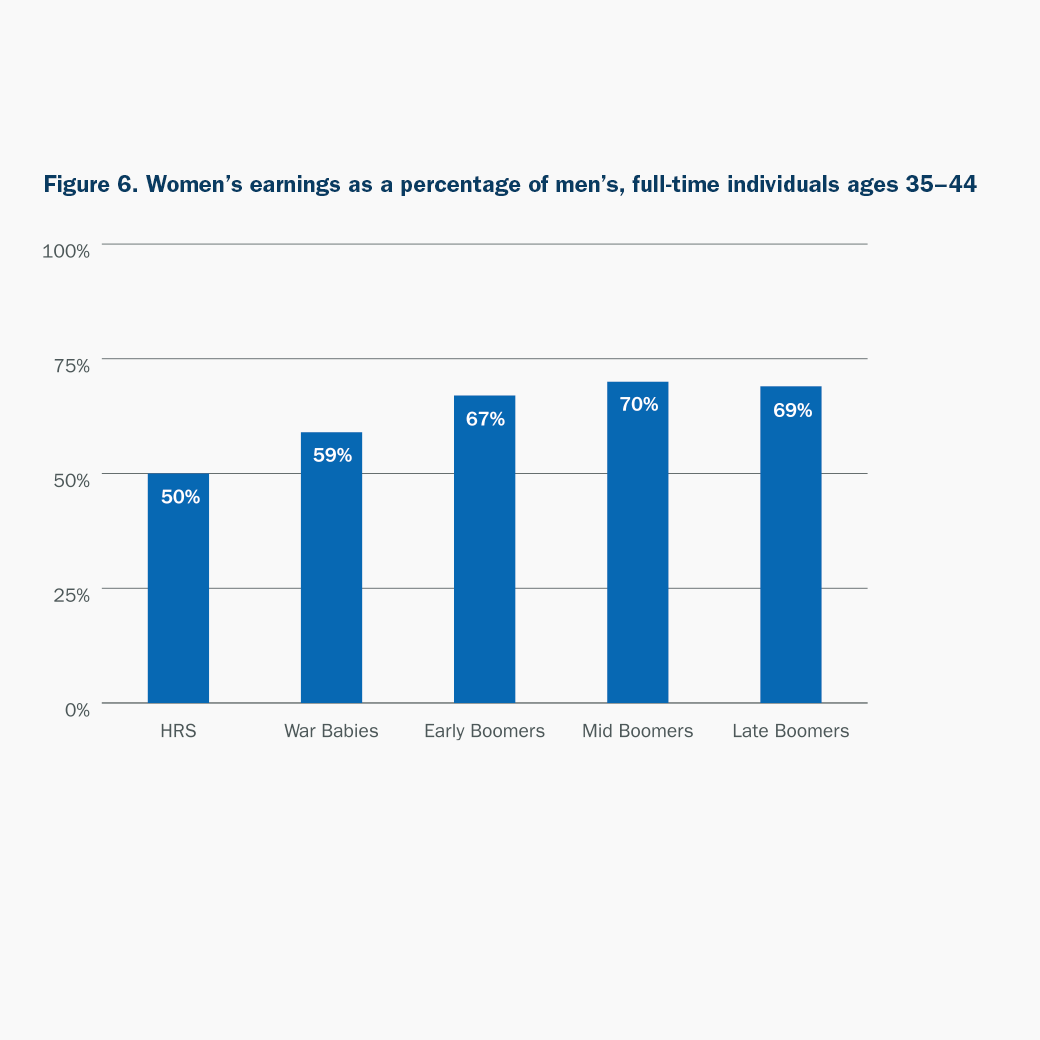In the 50 years since the enactment of Title IX, which prohibits sex discrimination in any education program or activity receiving federal financial assistance, women have made enormous strides in educational attainment, work and earnings. What effect has this had on their preparedness for retirement?
Summary
While the gender wage gap persists, women’s progress in the workforce has enhanced their economic status. However, women on average have also spent less of their adult lives married in recent years, and the lack of potential support from a spouse could put women at greater risk economically. This study documents women’s retirement preparedness in light of labor market and demographic changes. Since trends in economic gains and marriage differ for Black and White women, the results are reported by race as well as for women overall.
Key Insights
- Women who have spent most of their lives married look worse off than other women in terms of retirement preparedness compared to earlier cohorts, due in large part to the declining economic fortunes of their husbands.
- Mostly-single and never-married women have gained ground on those who are mostly-married due to the latter group’s declining eligibility for Social Security’s spousal benefit.
- The overall patterns are similar for both White and Black women.




